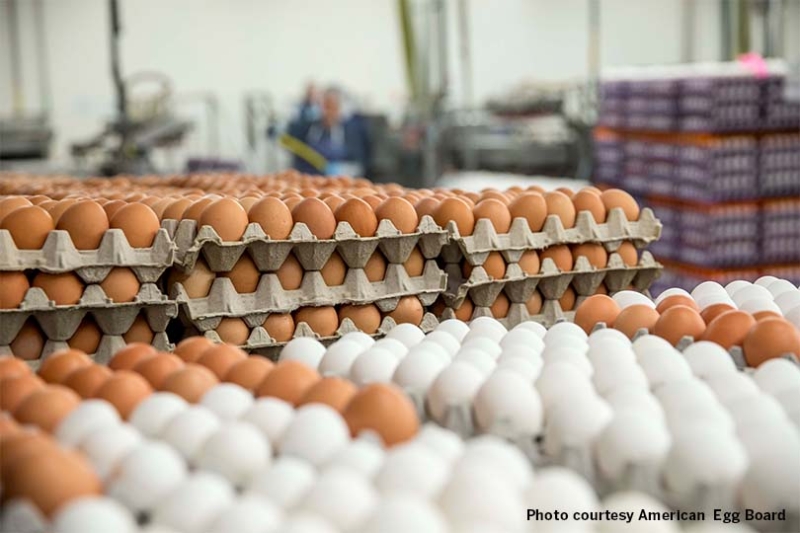By Emmy Powell
Communications Specialist
The U.S. Department of Agriculture’s (USDA) strategy to curb highly pathogenic avian influenza (HPAI), protect the U.S. poultry sector and lower egg prices has shown some success.
After reaching record highs, wholesale egg prices have dropped 64% and retail prices fell 27% from their peak earlier this year.
“When President Trump entered office, the cost of eggs was at a record high, seriously denting consumers’ wallets after years of awful inflation,” U.S. Secretary of Agriculture Brooke Rollins said. “On my first day as Secretary, we got to work to implement a five-pronged strategy to improve biosecurity on the farm and lower egg prices on grocery store shelves. The plan has worked, and families are seeing relief with egg prices driving food deflation in the April Consumer Price Index.”
USDA credits the price drop to its comprehensive response that includes increased on-farm biosecurity, regulatory relief, expanded imports and accelerated research and innovation.
As part of that effort, USDA has conducted 948 free, voluntary on-farm biosecurity assessments this year. These assessments focus on identifying areas to improve both wildlife mitigation and general farm security practices. The agency is also covering up to 75% of the cost for priority improvements identified during the process.
“While we are proud that over 900 biosecurity assessments have been conducted to date, resources remain available, and we are urging poultry farmers of all sizes to get your assessments done today before a potentially challenging fall,” Rollins said.
To request an assessment, farmers should email poultry.biosecurity@usda.gov or call 844-820-2234.
Rollins also highlighted other portions of USDA’s five-pronged strategy to combat HPAI.
She noted financial relief is reaching farms quicker. Since USDA increased indemnity payments in late February, the agency has paid out more than $70 million to farms with layer flocks affected by HPAI. These increased indemnity rates have provided growers a level of support and stability to help them move forward repopulating their flocks.
Regulatory changes have also played a role. USDA eliminated redundant worker safety data submissions and extended processing line speed waivers. Officials said these actions helped streamline operations and reduced burdens on the poultry sector.
To strengthen the long-term response, USDA launched the HPAI Poultry Innovation Grand Challenge Funding Opportunity. The program aims to advance new solutions in prevention, therapeutics and potential vaccines. The agency received 417 proposals totaling $793 million in requested funding.
The agency increased egg imports to supplement domestic supply and help keep prices lower for consumers. Three new egg-breaking and pasteurization facilities—one in Arkansas and two in New York—have also been approved to help handle the additional volume.
The multi-pronged strategy was launched in response to a nationwide HPAI outbreak that has resulted in the loss of more than 166 million birds since 2022. The resulting supply shock pushed egg prices to historic highs in 2024. Now, with egg prices easing and biosecurity improving, USDA said its strategy is delivering much-needed relief to both consumers and farmers.


Leave A Comment